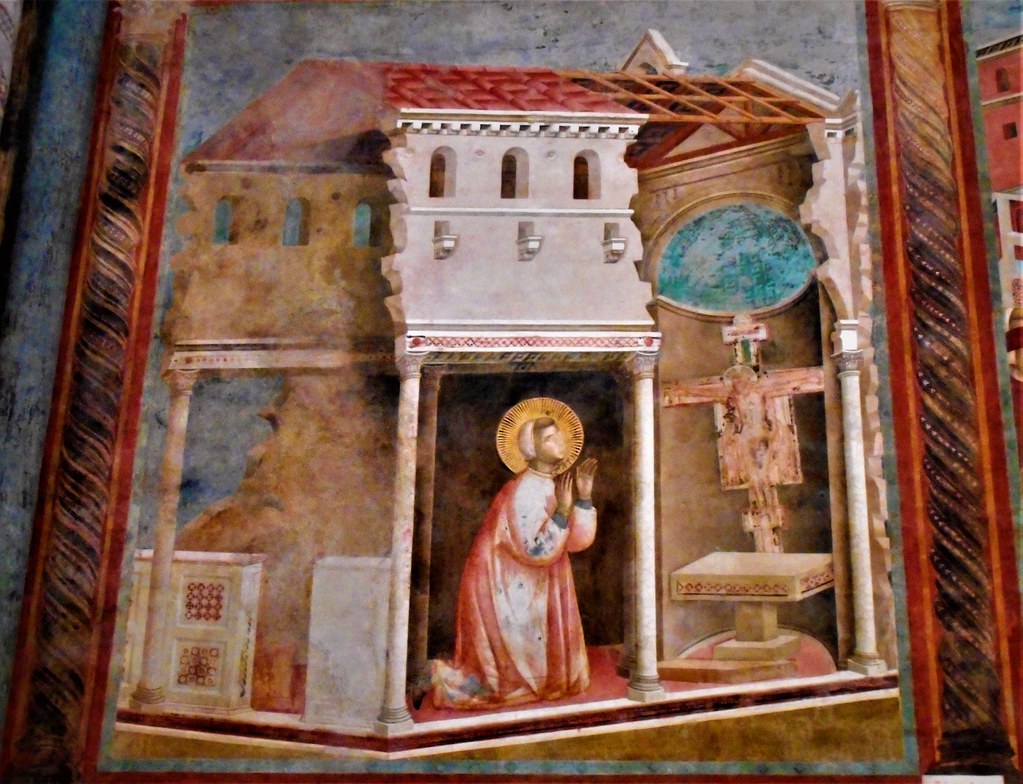In the bustling medieval town of Assisi, nestled in the Umbrian hills of central Italy, a young man named Giovanni di Pietro di Bernardone was born in 1181 or 1182. The world would come to know him as Francis of Assisi, one of Christianity’s most beloved saints and a figure whose radical embrace of poverty and compassion would transform religious life forever.
A Privileged Youth
Francis was born into wealth and comfort. His father, Pietro di Bernardone, was a prosperous cloth merchant who traded extensively with France—hence the nickname “Francesco” (meaning “the Frenchman”), which eventually replaced Giovanni as his given name. Young Francis enjoyed the privileges of his social class, reveling in fine clothes, parties, and the company of friends. He was known for his charm, generosity, and dreams of knightly glory.
As a young man, Francis participated in the ongoing conflicts between Assisi and the neighboring city of Perugia. In 1202, he was captured in battle and spent a year as a prisoner of war. This experience, along with a subsequent serious illness, marked the beginning of his spiritual transformation.
The Turning Point
Upon returning to Assisi, Francis found himself increasingly dissatisfied with his former life of pleasure. He began experiencing profound spiritual encounters that would change his trajectory completely. The most famous of these occurred while he was praying in the dilapidated chapel of San Damiano. According to tradition, he heard Christ speaking to him from the crucifix, saying, “Francis, go and repair my house, which as you see is falling into ruin.”
Francis initially took this literally, selling cloth from his father’s warehouse to fund the restoration of San Damiano. His furious father dragged him before the bishop of Assisi, demanding restitution. In a dramatic gesture that symbolized his complete break with his former life, Francis stripped off his fine clothes and returned them to his father, declaring that from that moment on, his only father was God in heaven.
Embracing Lady Poverty
Francis began living as a beggar, wearing a rough tunic tied with a rope, and devoting himself to prayer, caring for lepers, and rebuilding ruined churches with his own hands. His radical commitment to poverty was not merely ascetic self-denial but a joyful embrace of what he called “Lady Poverty.” He saw in poverty a way to identify completely with Christ and to be free from the anxieties and corruptions that wealth could bring.
His example was magnetic. Young men from Assisi and beyond began joining him, and by 1209, Francis had eleven followers. He wrote a simple rule for their community based on the Gospel teachings about poverty, humility, and service. When Francis sought approval from Pope Innocent III, the pontiff initially hesitated but eventually gave his blessing, recognizing the potential for spiritual renewal in this movement.
The Franciscan Movement
The Order of Friars Minor, as Francis called his followers (emphasizing their commitment to being “lesser brothers”), grew rapidly throughout Europe. Unlike traditional monks who lived in established monasteries, the Franciscans were mendicants—wandering preachers who relied on begging for their daily needs and brought the Gospel message directly to the people.
In 1212, a young noblewoman named Clare of Assisi was so moved by Francis’s preaching that she left her family to follow his way of life. With Francis’s guidance, she founded the Order of Poor Ladies (later known as the Poor Clares), establishing a parallel movement for women devoted to prayer and poverty.
A Universal Brother
Francis possessed an extraordinary sense of kinship with all of God’s creation. He famously preached to birds, tamed a fierce wolf that had been terrorizing the town of Gubbio, and referred to the sun, moon, fire, and water as his brothers and sisters. His “Canticle of the Creatures,” composed near the end of his life, is one of the earliest known pieces of Italian literature and a beautiful expression of his cosmic vision of praise.
In 1219, during the Fifth Crusade, Francis made a remarkable journey to Egypt, where he crossed enemy lines to meet with Sultan al-Malik al-Kamil. Rather than confronting the Muslim leader with hostility, Francis engaged in respectful dialogue. Though he did not succeed in converting the Sultan, the encounter was marked by mutual respect—a radical witness to peace in an age of religious warfare.
The Stigmata and Final Years
In September 1224, while praying on Mount La Verna, Francis experienced a mystical vision of a seraph. After this encounter, marks resembling the wounds of Christ’s crucifixion—the stigmata—appeared on his hands, feet, and side. Francis became the first person in Christian history to be said to bear these wounds, which he hid from others out of humility but which several witnesses claimed to have seen.
By this time, Francis’s health was failing. Years of extreme asceticism, fasting, and exposure had taken their toll. He suffered from various ailments, including an eye disease that left him nearly blind. Yet even in suffering, Francis maintained his characteristic joy and composed songs of praise.
Francis died on the evening of October 3, 1226, at the Porziuncola, the small chapel where his movement had begun. He was just 44 or 45 years old. As death approached, he asked to be laid naked on the bare ground, making one final gesture of his commitment to poverty and his return to the earth from which all life comes.
Legacy
Less than two years after his death, Francis was canonized by Pope Gregory IX in 1228. His influence on Christian spirituality, religious life, and even secular culture has been immeasurable. The Franciscan orders continue to serve throughout the world today, and Francis’s vision of joyful simplicity, creation care, and peace continues to inspire people of all faiths and none.
In 1979, Pope John Paul II declared Francis the patron saint of ecology, recognizing his profound environmental consciousness centuries before such concerns became widespread. His life challenges us to reconsider our relationship with material possessions, to embrace simplicity, to practice radical compassion, and to see the fingerprints of the divine in all of creation.
The little poor man from Assisi, who gave up everything the world prizes, gained a treasure that endures: a life of such luminous love and freedom that, eight centuries later, people still find in his example a path to transformation and joy.
Saint Francis was one of the most remarkable people who ever lived – a young man not much older than a teenager when his life took an extraordinary turn.



Leave a Reply
You must be logged in to post a comment.